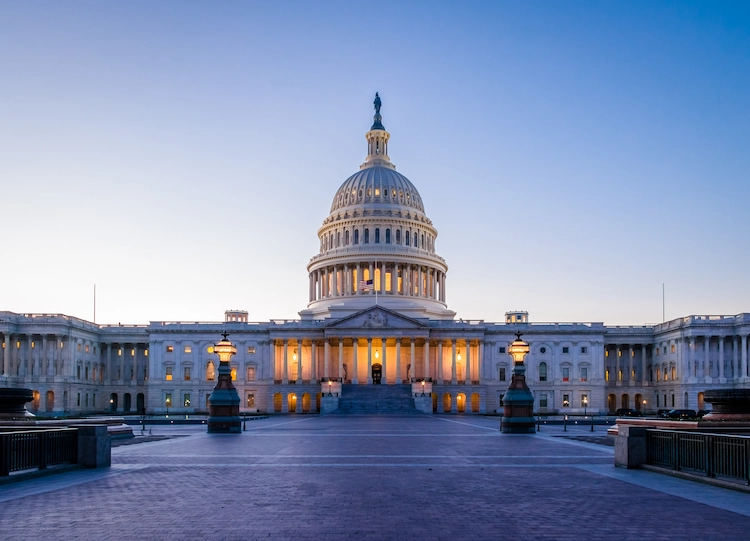SCOTUS Lifts Injunction Blocking Trump Administration’s Plans to Reduce Federal Workforce

In Trump v. American Federation of Government Employees, 606 U.S. ____ (2025), the U.S. Supreme Court granted the Trump Administration’s request to stay a district court order blocking President Donald Trump’s plan to reduce and restructure the federal workforce.
Facts of the Case
On February 11, 2025, President Trump issued an Executive Order seeking to reduce the size of the federal government through reductions in force (RIFs). Exec. Order No. 14,210 specifically directed agency heads to “promptly undertake preparations to initiate large-scale reductions in force (RIFs), consistent with applicable law,” and in doing so to prioritize RIFs for “offices that perform functions not mandated by statute or other law.”
Approximately two weeks later, the Office of Personnel Management (OPM) and the Office of Management and Budget (OMB) jointly issued a memorandum to all executive-branch agencies regarding the implementation of the President’s Executive Order through Agency RIF and Reorganization Plans (Plans). The Memo provided guidance on the principles that should inform the Plans, including objectives and priorities like providing “[b]etter
service for the American people” and “[i]ncreased productivity.” It also established deadlines for agencies to submit their “Phase 1” Plan and Phase 2” Plans.
Several labor unions, advocacy groups, and local governments filed suit in the United States District Court for the Northern District of California against the President, OPM, OMB, the U.S. DOGE Service, and 21 federal agencies. They sought to enjoin implementation of the Executive Order and the Memo jointly issued by the OPM and OMB to executive agencies. The district court granted a universal injunction enjoining the Trump Administration from proceeding with any existing or future RIFs pursuant to the Executive Order or Memo.
On May 30, 2025, the Ninth Circuit Court of Appeals denied the Trump Administration’s request to stay the preliminary injunction. The Administration subsequently went to the Supreme Court to ask for a stay, arguing that the injunction “inflicts ongoing and severe harm on the government” because it “interferes with the Executive Branch’s internal operations and unquestioned legal authority to plan and carry out RIFs, and does so on a government-wide scale.”
Supreme Court’s Ruling
The Supreme Court granted the stay. “Because the Government is likely to succeed on its argument that the Executive Order and Memorandum are lawful—and because the other factors bearing on whether to grant a stay are satisfied—we grant the application,” the majority wrote.
The majority went on to emphasize that it was not rendering any opinion on whether the RIF plans are lawful. “We express no view on the legality of any Agency RIF and Reorganization Plan produced or approved pursuant to the Executive Order and Memorandum,” the Court wrote. “The District Court enjoined further implementation or approval of the plans based on its view about the illegality of the Executive Order and Memorandum, not on any assessment of the plans themselves. Those plans are not before this Court.”
Dissent
Justice Ketanji Brown Jackson dissented. In her opinion, Justice Brown argued that the Court’s ruling would “allow an apparently unprecedented and congressionally unsanctioned dismantling of the Federal Government to continue apace, causing irreparable harm before courts can determine whether the President has the authority to engage in the actions he proposes.”
Previous Articles
Justices Skeptical of Trump Administration Tariffs
by DONALD SCARINCI on December 18, 2025
The U.S. Supreme Court heard oral arguments in Learning Resources, Inc. v. Trump (consolidated with...
SCOTUS Takes Up Key Election Case Involving Mail-In Ballots
by DONALD SCARINCI on December 17, 2025
The U.S. Supreme Court recently granted certiorari in a key election case, Watson v. Republican Nat...
SCOTUS Adds Second Amendment Case to Docket
by DONALD SCARINCI on November 27, 2025
The U.S. Supreme Court will consider another important Second Amendment case this term. The latest ...
The Amendments
-
Amendment1
- Establishment ClauseFree Exercise Clause
- Freedom of Speech
- Freedoms of Press
- Freedom of Assembly, and Petitition
-
Amendment2
- The Right to Bear Arms
-
Amendment4
- Unreasonable Searches and Seizures
-
Amendment5
- Due Process
- Eminent Domain
- Rights of Criminal Defendants
Preamble to the Bill of Rights
Congress of the United States begun and held at the City of New-York, on Wednesday the fourth of March, one thousand seven hundred and eighty nine.
THE Conventions of a number of the States, having at the time of their adopting the Constitution, expressed a desire, in order to prevent misconstruction or abuse of its powers, that further declaratory and restrictive clauses should be added: And as extending the ground of public confidence in the Government, will best ensure the beneficent ends of its institution.





